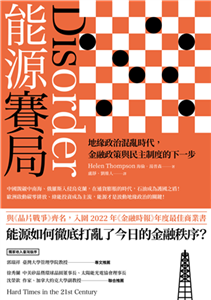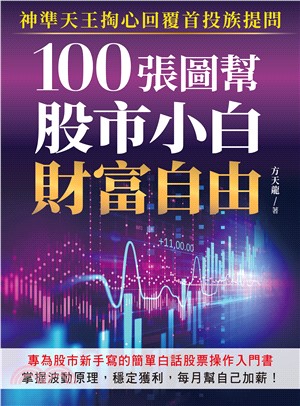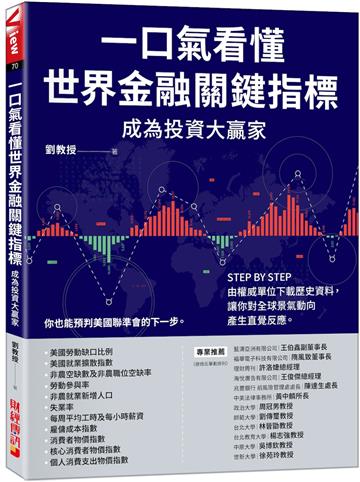Drug Bioavailability - Estimation Of Solubility, Permeability, Absorption And Bioavailability
商品資訊
系列名:Methods and Principles in Medicinal Chemistry
ISBN13:9783527320516
出版社:John Wiley & Sons Inc
作者:Van De Waterbee
出版日:2008/10/15
裝訂/頁數:精裝/649頁
規格:23.5cm*17.1cm*3.2cm (高/寬/厚)
定價
:NT$ 11702 元優惠價
:90 折 10532 元
若需訂購本書,請電洽客服 02-25006600[分機130、131]。
商品簡介
作者簡介
名人/編輯推薦
目次
相關商品
商品簡介
The gold standard for industrial research now completely revised in line with current trends in the field, with all contributions extensively updated or rewritten.
In 21 chapters readers can benefit from the key working knowledge of today's leading pharmaceutical companies, including Pfizer, AstraZeneca, and Roche. Drug developers from industry and academia present all the factors governing drug bioavailability, complete with practical examples and real-life data.
Part I focuses on in vitro and in vivo measurements of physicochemical properties, such as membrane permeability and ionization. Part II discusses solubility and gastrointestinal absorption, while the third part is devoted to metabolism and excretory mechanisms. The much revised and expanded part IV surveys current in silico approaches to predict drug properties needed to estimate the bioavailability of any new drug candidate. The final part shows how poor bioavailability may be improved by various approaches during the development process.
No other publication offers the same level of treatment on this crucial topic in modern drug development.
In 21 chapters readers can benefit from the key working knowledge of today's leading pharmaceutical companies, including Pfizer, AstraZeneca, and Roche. Drug developers from industry and academia present all the factors governing drug bioavailability, complete with practical examples and real-life data.
Part I focuses on in vitro and in vivo measurements of physicochemical properties, such as membrane permeability and ionization. Part II discusses solubility and gastrointestinal absorption, while the third part is devoted to metabolism and excretory mechanisms. The much revised and expanded part IV surveys current in silico approaches to predict drug properties needed to estimate the bioavailability of any new drug candidate. The final part shows how poor bioavailability may be improved by various approaches during the development process.
No other publication offers the same level of treatment on this crucial topic in modern drug development.
作者簡介
Han van de Waterbeemd studied physical organic chemistry at the Technical University of Eindhoven, and gained his PhD in medicinal chemistry from the University of Leiden. After an academic career at the University of Lausanne with Bernard Testa, he worked for 20 years in the pharmaceutical industry for Roche, Pfizer and AstraZeneca. His research interests are in optimizing compound quality using measured and predicted physicochemical and DMPK properties. He has contributed to 145 research papers and book chapters, and (co-)edited 13 books, and was involved in organizing conferences and courses to promote medicinal chemistry, with a focus on physicochemistry and predictive approaches in drug design. Dr. van de Waterbeemd is on the editorial board of several journals and of Methods and Principles in Medicinal Chemistry.
Bernard Testa is Emeritus Professor of the University of Lausanne, having served there for 25 years as a full professor and head of medicinal chemistry. He has written 5 books and edited 33 others, and (co)-authored well over 450 research and review articles in the fields of drug design and drug metabolism. Between 1994 and 1998, he was the European Editor of Pharmaceutical Research, and is now a senior editor of Chemistry and Biodiversity, as well as serving on the editorial boards of several leading journals. Professor Testa holds honorary doctorates from the universities of Milan, Montpellier and Parma, and is a recipient of the Nauta Award on Pharmacochemistry given by the European Federation for Medicinal Chemistry.
Bernard Testa is Emeritus Professor of the University of Lausanne, having served there for 25 years as a full professor and head of medicinal chemistry. He has written 5 books and edited 33 others, and (co)-authored well over 450 research and review articles in the fields of drug design and drug metabolism. Between 1994 and 1998, he was the European Editor of Pharmaceutical Research, and is now a senior editor of Chemistry and Biodiversity, as well as serving on the editorial boards of several leading journals. Professor Testa holds honorary doctorates from the universities of Milan, Montpellier and Parma, and is a recipient of the Nauta Award on Pharmacochemistry given by the European Federation for Medicinal Chemistry.
名人/編輯推薦
"The book covers a wide range of topics and, as such, it will serve as a valuable reference for pharmaceutical scientists, toxicologists, academicians, and the graduate students." (Doody's, May 2009)
目次
List of Contributors.
Preface.
A Personal Foreword.
1 Introduction: The Why and How of Drug Bioavailability Research (Han van de Waterbeemd and Bernard Testa).
1.1 Defining Bioavailability.
1.2 Presentation and Layout of the Book.
Part One Physicochemical Aspects of Drug Dissolution and Solubility.
2 Aqueous Solubility in Drug Discovery Chemistry, DMPK, and Biological Assays (Nicola Colclough, Linette Ruston, and Kin Tam).
2.1 Introduction.
2.2 Aqueous Solubility in Hit Identification.
2.3 Aqueous Solubility in Lead Identification and Lead Optimization.
2.4 Conclusions.
3 Gastrointestinal Dissolution and Absorption of Class II Drugs (Arik S. Dahan and Gordon L. Amidon).
3.1 Introduction.
3.2 Drug Absorption and the BCS.
3.3 Class II Drugs.
3.4 GI Physiological Variables Affecting Class II Drug Dissolution.
3.5 In Vitro Dissolution Tests for Class II Drugs.
3.6 BCS-Based FDA Guidelines: Implications for Class II Drugs.
3.7 Conclusions.
4 In Silico Prediction of Solubility (Andrew M. Davis and Pierre Bruneau).
4.1 Introduction.
4.2 What Solubility Measures to Model?
4.3 Is the Data Set Suitable for Modeling?
4.4 Descriptors and Modeling Methods for Developing Solubility Models.
4.5 Comparing Literature Solubility Models.
4.6 What Is the Influence of the Domain of Applicability?
4.7 Can We Tell when Good Predictions Are Made?
4.8 Conclusions.
Part Two Physicochemical and Biological Studies of Membrane Permeability and Oral Absorption.
5 Physicochemical Approaches to Drug Absorption (Han van de Waterbeemd).
5.1 Introduction.
5.2 Physicochemical Properties and Pharmacokinetics.
5.3 Dissolution and Solubility.
5.4 Ionization (pKa).
5.5 Molecular Size and Shape.
5.6 Hydrogen Bonding.
5.7 Lipophilicity.
5.8 Permeability.
5.9 Amphiphilicity.
5.10 Drug-Like Properties.
5.11 Computation Versus Measurement of Physicochemical Properties.
5.12 Outlook.
6 High-Throughput Measurement of Physicochemical Properties (Barbara P. Mason).
6.1 Introduction.
6.2 Positioning of Physicochemical Screening in Drug Discovery.
6.3 "Fit for Purpose"Versus "Gold Standard".
6.4 Solubility.
6.5 Dissociation Constants, pKa.
6.6 Lipophilicity.
6.7 Permeability.
6.8 Data Interpretation, Presentation, and Storage.
6.9 Conclusions.
7 An Overview of Caco-2 and Alternatives for Prediction of Intestinal Drug Transport and Absorption (Anna-Lena Ungell and Per Artursson).
7.1 Introduction.
7.2 Cell Cultures for Assessment of Intestinal Permeability.
7.3 Correlation to Fraction of Oral Dose Absorbed.
7.4 Cell Culture and Transport Experiments.
7.5 Active Transport Studies in Caco-2 Cells.
7.6 Metabolism Studies using Caco-2 Cells.
7.7 Conclusions.
8 Use of Animals for the Determination of Absorption and Bioavailability (Chris Logan).
8.1 Introduction.
8.2 Consideration of Absorption and Bioavailability.
8.3 Choice of Animal Species.
8.4 Methods.
8.5 In Vivo Methods for Determining Bioavailability.
8.6 Inhalation.
8.7 Relevance of Animal Models.
8.8 Prediction of Dose in Man.
8.9 Conclusions.
9 In Vivo Permeability Studies in the Gastrointestinal Tract of Humans (Niclas Petri and Hans Lennernäs).
9.1 Introduction.
9.2 Definitions of Intestinal Absorption, Presystemic Metabolism, and Absolute Bioavailability.
9.3 Methodological Aspects of In Vitro Intestinal Perfusion Techniques.
9.4 Paracellular Passive Diffusion.
9.5 Transcellular Passive Diffusion.
9.6 Carrier-Mediated Intestinal Absorption.
9.7 Jejunal Transport and Metabolism.
9.8 Regional Differences in Transport and Metabolism of Drugs.
9.9 Conclusions.
Part Three Role of Transporters and Metabolism in Oral Absorption.
10 Transporters in the Gastrointestinal Tract (Pascale Anderle and Carsten U. Nielsen).
10.1 Introduction.
10.2 Active Transport Along the Intestine and Influence on Drug Absorption.
10.3 Transporters and Genomics.
10.4 Structural Requirements for Targeting Absorptive Intestinal Transporters.
10.5 Transporters and Diseased States of the Intestine.
10.6 Summary and Outlook.
11 Hepatic Transport (Kazuya Maeda, Hiroshi Suzuki, and Yuichi Sugiyama).
11.1 Introduction.
11.2 Hepatic Uptake.
11.3 Biliary Excretion.
11.4 Sinusoidal Efflux.
11.5 Prediction of Hepatobiliary Transport of Substrates from In Vitro Data.
11.6 Genetic Polymorphism of Transporters and Its Clinical Relevance.
11.7 Transporter-Mediated Drug–Drug Interactions.
11.8 Concluding Remarks.
12 The Importance of Gut Wall Metabolism in Determining Drug Bioavailability (Christopher Kohl).
12.1 Introduction.
12.2 Physiology of the Intestinal Mucosa.
12.3 Drug-Metabolizing Enzymes in the Human Mucosa.
12.4 Oral Bioavailability.
12.5 Clinical Relevance of Gut Wall First-Pass Metabolism.
13 Modified Cell Lines (Guangqing Xiao and Charles L. Crespi).
13.1 Introduction.
13.2 Cell/Vector Systems.
13.3 Expression of Individual Metabolic Enzymes.
13.4 Expression of Transporters.
13.5 Summary and Future Perspectives.
Part Four Computational Approaches to Drug Absorption and Bioavailability.
14 Calculated Molecular Properties and Multivariate Statistical Analysis (Ulf Norinder).
14.1 Introduction.
14.2 Calculated Molecular Descriptors.
14.3 Statistical Methods.
14.4 Applicability Domain.
14.5 Training and Test Set Selection and Model Validation.
14.6 Future Outlook.
15 Computational Absorption Prediction (Christel A.S. Bergström, Markus Haeberlein, and Ulf Norinder).
15.1 Introduction.
15.2 Descriptors Influencing Absorption.
15.3 Computational Models of Oral Absorption.
15.4 Software for Absorption Prediction.
15.5 Future Outlook.
16 In Silico Prediction of Human Bioavailability (David J. Livingstone and Han van de Waterbeemd).
16.1 Introduction.
16.2 Concepts of Pharmacokinetics and Role of Oral Bioavailability.
16.3 In Silico QSAR Models of Oral Bioavailability.
16.4 Prediction of the Components of Bioavailability.
16.5 Using Physiological Modeling to Predict Oral Bioavailability.
16.6 Conclusions.
17 Simulations of Absorption, Metabolism, and Bioavailability (Michael B. Bolger, Robert Fraczkiewicz, and Viera Lukacova).
17.1 Introduction.
17.2 Background.
17.3 Use of Rule-Based Computational Alerts in Early Discovery.
17.4 Mechanistic Simulation (ACAT Models) in Early Discovery.
17.5 Mechanistic Simulation of Bioavailability (Drug Development).
17.6 Regulatory Aspects of Modeling and Simulation (FDA Critical Path Initiative).
17.7 Conclusions.
18 Toward Understanding P-Glycoprotein Structure–Activity Relationships (Anna Seelig).
18.1 Introduction.
18.2 Measurement of P-gp Function.
18.3 Predictive In Silico Models.
18.4 Discussion.
Part Five Drug Development Issues.
19 Application of the Biopharmaceutics Classification System Now and in the Future (Bertil Abrahamsson and Hans Lennernäs).
19.1 Introduction.
19.2 Definition of Absorption and Bioavailability of Drugs Following Oral Administration.
19.3 Dissolution and Solubility.
19.4 The Effective Intestinal Permeability (Peff).
19.5 Luminal Degradation and Binding.
19.6 The Biopharmaceutics Classification System.
19.7 Conclusions.
20 Prodrugs (Bernard Testa).
20.1 Introduction.
20.2 Why Prodrugs?
20.3 How Prodrugs?
20.4 Conclusions.
21 Modern Delivery Strategies: Physiological Considerations for Orally Administered Medications (Clive G. Wilson and Werner Weitschies).
21.1 Introduction.
21.2 The Targets.
21.3 The Upper GI Tract: Mouth and Esophagus.
21.4 Mid-GI Tract: Stomach and Intestine.
21.5 The Lower GI Tract: The Colon.
21.6 Pathophysiological Effects on Transit.
21.7 Pathophysiological Effects on Permeability.
21.8 pH.
21.9 Conclusions.
22 Nanotechnology for Improved Drug Bioavailability (Marjo Yliperttula and Arto Urtti).
22.1 Introduction.
22.2 Nanotechnological Systems in Drug Delivery.
22.3 Delivery via Nanotechnologies.
22.4 Key Issues and Future Prospects.
Index.
Preface.
A Personal Foreword.
1 Introduction: The Why and How of Drug Bioavailability Research (Han van de Waterbeemd and Bernard Testa).
1.1 Defining Bioavailability.
1.2 Presentation and Layout of the Book.
Part One Physicochemical Aspects of Drug Dissolution and Solubility.
2 Aqueous Solubility in Drug Discovery Chemistry, DMPK, and Biological Assays (Nicola Colclough, Linette Ruston, and Kin Tam).
2.1 Introduction.
2.2 Aqueous Solubility in Hit Identification.
2.3 Aqueous Solubility in Lead Identification and Lead Optimization.
2.4 Conclusions.
3 Gastrointestinal Dissolution and Absorption of Class II Drugs (Arik S. Dahan and Gordon L. Amidon).
3.1 Introduction.
3.2 Drug Absorption and the BCS.
3.3 Class II Drugs.
3.4 GI Physiological Variables Affecting Class II Drug Dissolution.
3.5 In Vitro Dissolution Tests for Class II Drugs.
3.6 BCS-Based FDA Guidelines: Implications for Class II Drugs.
3.7 Conclusions.
4 In Silico Prediction of Solubility (Andrew M. Davis and Pierre Bruneau).
4.1 Introduction.
4.2 What Solubility Measures to Model?
4.3 Is the Data Set Suitable for Modeling?
4.4 Descriptors and Modeling Methods for Developing Solubility Models.
4.5 Comparing Literature Solubility Models.
4.6 What Is the Influence of the Domain of Applicability?
4.7 Can We Tell when Good Predictions Are Made?
4.8 Conclusions.
Part Two Physicochemical and Biological Studies of Membrane Permeability and Oral Absorption.
5 Physicochemical Approaches to Drug Absorption (Han van de Waterbeemd).
5.1 Introduction.
5.2 Physicochemical Properties and Pharmacokinetics.
5.3 Dissolution and Solubility.
5.4 Ionization (pKa).
5.5 Molecular Size and Shape.
5.6 Hydrogen Bonding.
5.7 Lipophilicity.
5.8 Permeability.
5.9 Amphiphilicity.
5.10 Drug-Like Properties.
5.11 Computation Versus Measurement of Physicochemical Properties.
5.12 Outlook.
6 High-Throughput Measurement of Physicochemical Properties (Barbara P. Mason).
6.1 Introduction.
6.2 Positioning of Physicochemical Screening in Drug Discovery.
6.3 "Fit for Purpose"Versus "Gold Standard".
6.4 Solubility.
6.5 Dissociation Constants, pKa.
6.6 Lipophilicity.
6.7 Permeability.
6.8 Data Interpretation, Presentation, and Storage.
6.9 Conclusions.
7 An Overview of Caco-2 and Alternatives for Prediction of Intestinal Drug Transport and Absorption (Anna-Lena Ungell and Per Artursson).
7.1 Introduction.
7.2 Cell Cultures for Assessment of Intestinal Permeability.
7.3 Correlation to Fraction of Oral Dose Absorbed.
7.4 Cell Culture and Transport Experiments.
7.5 Active Transport Studies in Caco-2 Cells.
7.6 Metabolism Studies using Caco-2 Cells.
7.7 Conclusions.
8 Use of Animals for the Determination of Absorption and Bioavailability (Chris Logan).
8.1 Introduction.
8.2 Consideration of Absorption and Bioavailability.
8.3 Choice of Animal Species.
8.4 Methods.
8.5 In Vivo Methods for Determining Bioavailability.
8.6 Inhalation.
8.7 Relevance of Animal Models.
8.8 Prediction of Dose in Man.
8.9 Conclusions.
9 In Vivo Permeability Studies in the Gastrointestinal Tract of Humans (Niclas Petri and Hans Lennernäs).
9.1 Introduction.
9.2 Definitions of Intestinal Absorption, Presystemic Metabolism, and Absolute Bioavailability.
9.3 Methodological Aspects of In Vitro Intestinal Perfusion Techniques.
9.4 Paracellular Passive Diffusion.
9.5 Transcellular Passive Diffusion.
9.6 Carrier-Mediated Intestinal Absorption.
9.7 Jejunal Transport and Metabolism.
9.8 Regional Differences in Transport and Metabolism of Drugs.
9.9 Conclusions.
Part Three Role of Transporters and Metabolism in Oral Absorption.
10 Transporters in the Gastrointestinal Tract (Pascale Anderle and Carsten U. Nielsen).
10.1 Introduction.
10.2 Active Transport Along the Intestine and Influence on Drug Absorption.
10.3 Transporters and Genomics.
10.4 Structural Requirements for Targeting Absorptive Intestinal Transporters.
10.5 Transporters and Diseased States of the Intestine.
10.6 Summary and Outlook.
11 Hepatic Transport (Kazuya Maeda, Hiroshi Suzuki, and Yuichi Sugiyama).
11.1 Introduction.
11.2 Hepatic Uptake.
11.3 Biliary Excretion.
11.4 Sinusoidal Efflux.
11.5 Prediction of Hepatobiliary Transport of Substrates from In Vitro Data.
11.6 Genetic Polymorphism of Transporters and Its Clinical Relevance.
11.7 Transporter-Mediated Drug–Drug Interactions.
11.8 Concluding Remarks.
12 The Importance of Gut Wall Metabolism in Determining Drug Bioavailability (Christopher Kohl).
12.1 Introduction.
12.2 Physiology of the Intestinal Mucosa.
12.3 Drug-Metabolizing Enzymes in the Human Mucosa.
12.4 Oral Bioavailability.
12.5 Clinical Relevance of Gut Wall First-Pass Metabolism.
13 Modified Cell Lines (Guangqing Xiao and Charles L. Crespi).
13.1 Introduction.
13.2 Cell/Vector Systems.
13.3 Expression of Individual Metabolic Enzymes.
13.4 Expression of Transporters.
13.5 Summary and Future Perspectives.
Part Four Computational Approaches to Drug Absorption and Bioavailability.
14 Calculated Molecular Properties and Multivariate Statistical Analysis (Ulf Norinder).
14.1 Introduction.
14.2 Calculated Molecular Descriptors.
14.3 Statistical Methods.
14.4 Applicability Domain.
14.5 Training and Test Set Selection and Model Validation.
14.6 Future Outlook.
15 Computational Absorption Prediction (Christel A.S. Bergström, Markus Haeberlein, and Ulf Norinder).
15.1 Introduction.
15.2 Descriptors Influencing Absorption.
15.3 Computational Models of Oral Absorption.
15.4 Software for Absorption Prediction.
15.5 Future Outlook.
16 In Silico Prediction of Human Bioavailability (David J. Livingstone and Han van de Waterbeemd).
16.1 Introduction.
16.2 Concepts of Pharmacokinetics and Role of Oral Bioavailability.
16.3 In Silico QSAR Models of Oral Bioavailability.
16.4 Prediction of the Components of Bioavailability.
16.5 Using Physiological Modeling to Predict Oral Bioavailability.
16.6 Conclusions.
17 Simulations of Absorption, Metabolism, and Bioavailability (Michael B. Bolger, Robert Fraczkiewicz, and Viera Lukacova).
17.1 Introduction.
17.2 Background.
17.3 Use of Rule-Based Computational Alerts in Early Discovery.
17.4 Mechanistic Simulation (ACAT Models) in Early Discovery.
17.5 Mechanistic Simulation of Bioavailability (Drug Development).
17.6 Regulatory Aspects of Modeling and Simulation (FDA Critical Path Initiative).
17.7 Conclusions.
18 Toward Understanding P-Glycoprotein Structure–Activity Relationships (Anna Seelig).
18.1 Introduction.
18.2 Measurement of P-gp Function.
18.3 Predictive In Silico Models.
18.4 Discussion.
Part Five Drug Development Issues.
19 Application of the Biopharmaceutics Classification System Now and in the Future (Bertil Abrahamsson and Hans Lennernäs).
19.1 Introduction.
19.2 Definition of Absorption and Bioavailability of Drugs Following Oral Administration.
19.3 Dissolution and Solubility.
19.4 The Effective Intestinal Permeability (Peff).
19.5 Luminal Degradation and Binding.
19.6 The Biopharmaceutics Classification System.
19.7 Conclusions.
20 Prodrugs (Bernard Testa).
20.1 Introduction.
20.2 Why Prodrugs?
20.3 How Prodrugs?
20.4 Conclusions.
21 Modern Delivery Strategies: Physiological Considerations for Orally Administered Medications (Clive G. Wilson and Werner Weitschies).
21.1 Introduction.
21.2 The Targets.
21.3 The Upper GI Tract: Mouth and Esophagus.
21.4 Mid-GI Tract: Stomach and Intestine.
21.5 The Lower GI Tract: The Colon.
21.6 Pathophysiological Effects on Transit.
21.7 Pathophysiological Effects on Permeability.
21.8 pH.
21.9 Conclusions.
22 Nanotechnology for Improved Drug Bioavailability (Marjo Yliperttula and Arto Urtti).
22.1 Introduction.
22.2 Nanotechnological Systems in Drug Delivery.
22.3 Delivery via Nanotechnologies.
22.4 Key Issues and Future Prospects.
Index.
主題書展
更多
主題書展
更多書展今日66折
您曾經瀏覽過的商品
購物須知
外文書商品之書封,為出版社提供之樣本。實際出貨商品,以出版社所提供之現有版本為主。部份書籍,因出版社供應狀況特殊,匯率將依實際狀況做調整。
無庫存之商品,在您完成訂單程序之後,將以空運的方式為你下單調貨。為了縮短等待的時間,建議您將外文書與其他商品分開下單,以獲得最快的取貨速度,平均調貨時間為1~2個月。
為了保護您的權益,「三民網路書店」提供會員七日商品鑑賞期(收到商品為起始日)。
若要辦理退貨,請在商品鑑賞期內寄回,且商品必須是全新狀態與完整包裝(商品、附件、發票、隨貨贈品等)否則恕不接受退貨。
























